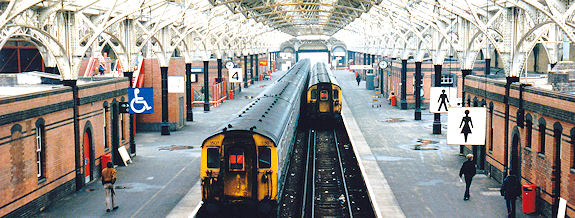
Dover Cruise Terminal 1, Western Docks, Dover CT17 9DQ
With its proximity to the continent, Dover has been used as a port since Roman times. A small artificial harbour has existed since at least 1495. In the early seventeenth century, it began to be used by small fast sailing craft carrying mails to Calais and Ostend - the first Channel 'packets'. By the mid 18th Century, three dock basins had been constructed. The first steamer to cross to Calais was the Majestic in 1816. In 1820, the first regular steam ship service to Calais began. These soon replaced the sailing packets, services being provided by the Admiralty for much of the period.
The South Eastern Railway (SER) reached Dover Town in 1843, and they formed a subsidiary company to start steamer services to Calais and Boulogne. The SER also ran steamers from Folkestone, on which port they later concentrated. The East Kent Railway, later the London, Chatham & Dover railway (LCDR) also arrived in Dover, and they linked to the docks in 1861, also the year the Dover Harbour Board was created. Railway connections were allowed into the docks in 1862. The SER agreed to confine its operations to Folkestone.
The LCDR obtained powers to run their own steamers in 1864, and they then obtained the mail contract, initially running to Boulogne since it had the first railway link to Paris. The railway arrived at Calais in 1867, and this shorter route took prominence over Boulogne. The SER and LCDR merged in 1899 to form the South Eastern & Chatham Railway.
The foundation stone of Dover's Admiralty Pier was laid on 2nd April 1848 as the first stage in the proposed harbour of refuge for the Royal Navy. The first section of pier was 244m (800 ft) long and completed in 1854, when another contract was awarded for a further 305m (1000 ft).
From 1851 cross-channel steamers were using the pier regularly. In 1860 the South Eastern Railway started running its trains along the pier to connect with the railway owned steamers, and in 1864 its rival, the London Chatham and Dover Railway, did the same.
The second extension was completed in November 1864. In 1871, a further extension of 91m (300 ft) was commissioned, terminating in a substantial pierhead. The work was completed in 1875, with the Pier Turret on the pier head added for defence in 1879. In 1899 work started on extending the pier again as part of the new Admiralty Harbour, and in 1900 the extension of 610m (2,000 ft) was completed bringing the total length to 1.26 km (4,140 ft). In 1909 work started at the landward end of the pier to reclaim land for the building of the new Marine Station.
The construction of Dover Marine Station on an expanded Admiralty Pier was started by the South Eastern & Chatham Railway (SECR) in 1910. It was conpleted in 1914, becoming operational on 2 February 1915, but did not operate commercially until 18 January 1919, with the withdrawal of ferries during hostilities. During the Great War it served as the Britain's ambulance train station, carrying many thousands of wounded from the Western Front. During WW2 it featured prominently during the Dunkirk evacuation.
It was a large terminus with four platforms covered by a full roof. It was re-named Dover Marine on 5 December 1918, then re-named to Dover Western Docks on 14 May 1979. A number of special services ran to Dover Marine, including the all-Pullman 'Golden Arrow' from 1926. the Night Ferry began service in 1936. The station was closed by British Rail on 26 September 1994 with the demise of boat trains and the opening of the Channel Tunnel.
The station is Listed Grade II and is now in use as a cruise terminal.
By road: On A20
By rail: Dover Station is approx 4 km away

Greenway, Ambrose, A Century of Cross Channel Passenger Ferries, Littlehampton Book Services, ISBN-10: 0711010692 (1981)
Lane, Anthony, Front Line Harbour: A History of the Port of Dover, Amberley Publishing, ISBN-10: 1445600307 (2011)
Lane, Anthony, Kent Ports and Harbours, The History Press, ISBN-10: 0752453637 (2010)
Streater, R. A., Cross Channel Ferries From Kent, Marinart, ISBN-10: 0904478351 (1978)
Thatcher, Wrenford, Lines into London: London Railways in the Post-War Years, The History Press, ISBN-10: 0752458922 (2011)
Turcan, Robert, Dover Through Time, Amberley Publishing, ISBN-10: 1445600056 (2010)
Whitehouse, Patrick & St. John Thomas, David, SR 150: A Century and a Half of the Southern Railway, David & Charles, ISBN-10: 0715313762 (2002)